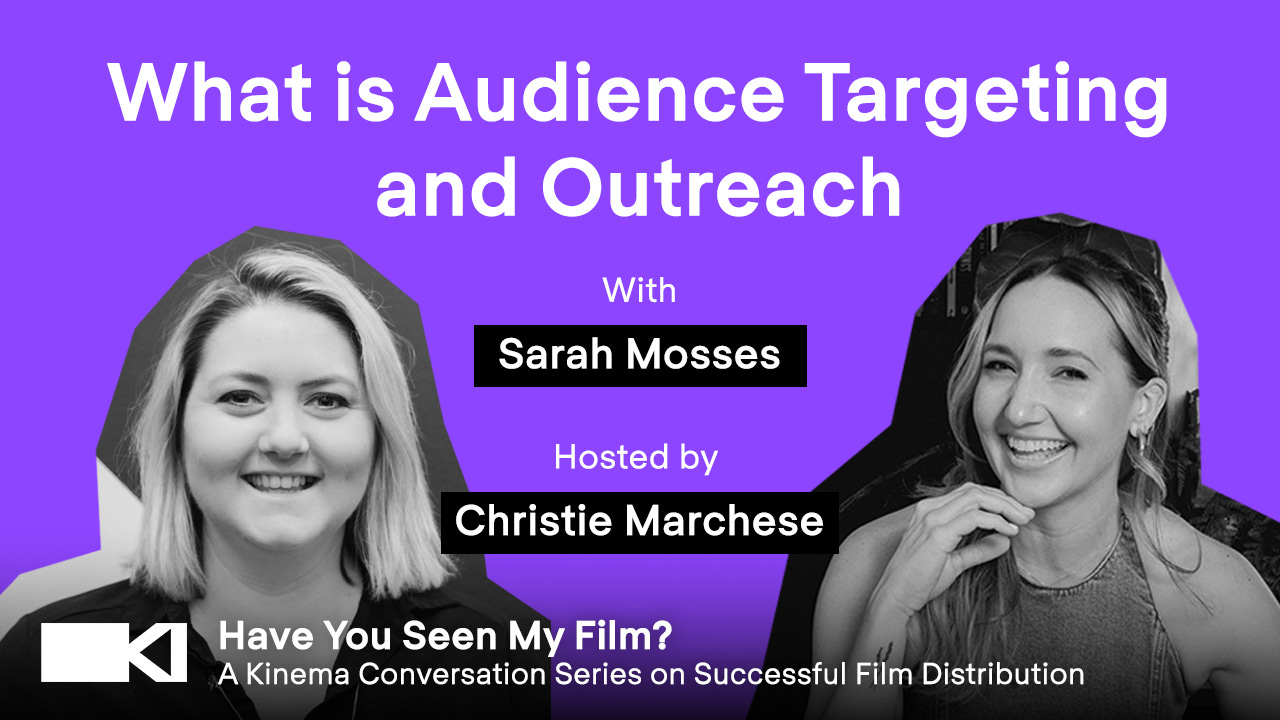Steal these tactics to reach your film’s audiences | Sarah Mosses (CEO Together Films)
Whether or not you get signed by a major distributor, "the success comes if you make it happen!"
Watch now on YouTube.
is the founder and CEO of Together Films, a company that provides consultancy and campaign delivery for films, film festivals, and brands aiming to inspire change. With over a decade of experience in film marketing and distribution, Sarah has run campaigns for hundreds of films and serves as acting head of marketing for leading film festivals. In our conversation, we discuss:The CAST method for audience targeting
Data-driven approaches to film marketing
Strategies for successful community screening tours
Practical tips for filmmakers on how to control their own distribution
Key takeaways:
The audience will not just come.
“If you fail to plan, then you’re planning to fail.”
Who are your intended audiences and how will you communicate to them.
The CAST method for audience targeting: who has the ability for payment and who doesn’t.
Commercial: Who will buy tickets?
Affected: Who is directly impacted by the film's subject?
Supportive: Who supports the affected community?
Tactical: Who can make changes based on the film's message? (This group may not pay but has real power or influence. Think a government agency or big law firm).
Consider advertising vs. gifting.
What is a segment that you might want to gift to? Who will tell all their friends?
Instead of spending $10 on advertising to get someone to buy a $10 ticket you may instead spend $10 to buy the “right person” a ticket.
Leverage data for marketing:
Build a comprehensive CRM with detailed audience information
Could be Mailchimp, Excel, Google Sheets, Airtable
At a minimum collect: City, Zip, and Issue preference
Use custom fields to segment and filter your audience
Conduct fresh research for each campaign to expand your reach (e.g., Google, Secretariat networks, Census data, etc. to find organization or people you aren’t already connected with who would be interested in your film)
Booking strategy:
Exhibition — go where the people are
Theatrical — we’re screening in NYC, who here would be interested
Plan your screening tour strategically:
Work out your windowing strategy and align your screening tour with your overall release strategy
Target locations beyond major markets (“most docs never go past the top 15 markets.” The US is a massive country. Don’t limit yourself.)
Focus on proactive outbound outreach for the first 30-60 days. The hope with this effort is to start generating inbound screening requests.
Inbound will not happen organically
When you’re covered in any press make sure to say your film is in theaters and available for community screenings so you can encourage more inbound
For filmmakers running their own distribution:
You can do this! If you don’t have the big “golden ticket” of a distribution offer you’re like most other filmmakers. You made a film. You can certainly release it.
Assess your internal time commitment and capacity (what are you willing to dedicate to this and what makes sense to do based on your availability).
Set a realistic and achievable goal
“It’s madness to go out saying I want 2,000 screenings”
Learn from something small: e.g., 10 screenings in 3 months with a min revenue target is $2000 ($200 licensing fee) and if it starts to scale build on that momentum
Evaluate what you’re doing and share what is working to fuel future bookings:
who was the host?
what was their job title?
who did they invite?
did you send them an evaluation form?
do you have photos from that event?
Share these outcomes with other potential screening hosts
A disciplined and diligent approach on outreach will create inbound interest.
After your initial release, spend just 2 hours a week emailing 10 new people (schools, organizations, community groups, niche festivals in random countries outside of your primary market).
You will get 1-2 conversions: $200-$500 per screening from 2 hours of work
Always solicit immediate feedback so you can tailor your approach
Tailor your pitch to each audience segment:
Often a pitch leads with logline, synopsis, trailer, “my film is brilliant.” Don’t do this.
Focus on how the film can help your audience achieve their goals
With or without a big distribution offer, the success comes if you make it happen.
Ask for the planning meetings or your preferred placement in a film festival program, etc.
Where to find Sarah Mosses:
Company website: https://togetherfilms.org/
Personal website: https://www.sarahmosses.com/
Instagram: https://www.instagram.com/sarah_mosses_
LinkedIn: Sarah Mosses
In this episode, we cover:
(00:00) Sarah's background and Together Films' work
(02:25) The CAST method for audience targeting
(06:36) Data-driven approaches to film marketing
(9:54) Strategies for community screening tours
(16:44) Targeting the right audience for impact
(19:24) Advice for filmmakers running their own distribution
(23:03) How to connect with Sarah and Together Films
Referenced:
Keri Putnam, Harvard Kennedy School study: https://shorensteincenter.org/us-independent-film-audience-landscape-study/
Together Films case studies: https://togetherfilms.org/case-studies/



